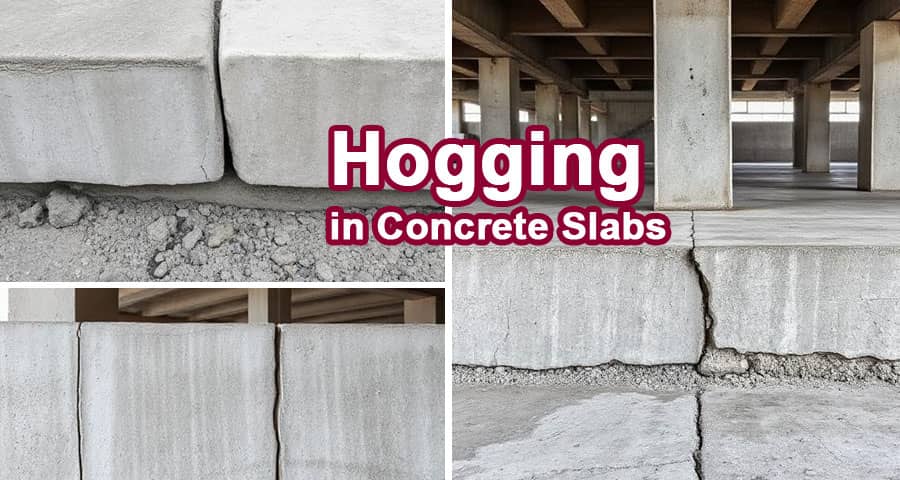What is Hogging in Concrete Slabs?

Understanding Hogging in Concrete Slabs
Hogging in concrete slabs is a critical structural concern that must be properly understood to ensure the longevity and durability of a concrete structure. It refers to the upward bending or deformation of a slab due to external forces, load distribution, and material properties. This phenomenon occurs in structural elements such as reinforced concrete slabs, beams, and bridges, affecting their performance and integrity.
Causes of Hogging in Concrete Slabs
Several factors contribute to hogging in concrete slabs, and understanding them is essential for structural engineers, contractors, and builders to prevent potential failures.
1. Load Distribution and Support Conditions
Concrete slabs experience hogging primarily due to the improper distribution of loads and the positioning of support points. When a slab is supported at two or more points, the mid-span may experience sagging (downward bending), while the regions near the supports experience hogging (upward bending).
2. Uneven Settlement of Foundations
If the foundation or supporting beams of a structure settle unevenly due to soil movement, compaction issues, or differential settlement, it can lead to an upward deformation in certain areas, causing hogging stress in the slab.
3. Thermal Expansion and Contraction
Concrete expands and contracts with temperature variations, which can lead to deformation over time. If expansion joints are not properly placed or designed, the slab can experience hogging due to differential thermal movement.
4. Overloading and Structural Stresses
Excessive loads beyond the design capacity of the slab can contribute to hogging moments at specific locations. This typically happens when live loads, heavy equipment, or additional construction materials are placed unevenly on the surface.
5. Reinforcement and Material Deficiencies
Inadequate reinforcement placement or material inconsistencies within the concrete mix can lead to weak structural elements. If reinforcing steel bars (rebar) are not correctly positioned, they may not provide the required resistance against bending moments, leading to hogging.
Effects of Hogging on Concrete Slabs
Hogging in concrete slabs can have severe consequences if not addressed promptly. Some of the most common effects include:
1. Structural Cracking and Failure
Excessive hogging can cause cracks to develop on the surface of the slab, particularly in tension zones. Over time, these cracks can propagate, reducing the structural integrity of the slab and leading to eventual failure.
2. Serviceability Issues
Hogging can create uneven surfaces, misalignments, and level discrepancies, making the slab unsuitable for various applications, including flooring, bridge decks, and industrial platforms.
3. Reinforcement Exposure and Corrosion
Cracks induced by hogging can expose reinforcement bars to moisture and air, leading to corrosion. This significantly reduces the strength of the slab and increases maintenance costs.
4. Increased Repair and Maintenance Costs
If not rectified, hogging can lead to expensive repair work, requiring extensive structural retrofitting, reinforcement replacement, and resurfacing.
How to Prevent and Control Hogging in Concrete Slabs
Prevention is always better than repair when dealing with hogging in concrete structures. Here are the best preventative measures to minimize its occurrence:
1. Proper Structural Design and Reinforcement Placement
- Structural engineers must design slabs with adequate reinforcement to counteract bending moments.
- The correct placement of rebar is crucial to resisting hogging stresses. This includes providing sufficient top reinforcement near support areas where hogging is most likely to occur.
- Using high-quality concrete mixtures ensures uniform strength and durability.
2. Ensure Uniform Load Distribution
- Avoid placing excessive loads in localized areas, as this can induce hogging.
- Distribute heavy equipment and storage evenly to prevent stress concentrations.
3. Foundation and Soil Stabilization
- Conduct proper geotechnical investigations to assess soil conditions before construction.
- Use pile foundations, soil compaction, or ground improvement techniques to minimize differential settlement.
- Regularly monitor foundation movement to detect early signs of deformation.
4. Implement Thermal Expansion Joints
- Expansion joints allow concrete slabs to expand and contract without causing significant stresses.
- These joints should be strategically placed based on temperature variations and the structural layout.
5. Quality Construction and Regular Inspections
- Ensure that high-quality construction materials are used to avoid inconsistencies in slab performance.
- Conduct routine structural inspections to identify early signs of hogging and implement necessary corrective actions.
- Utilize non-destructive testing (NDT) methods like ground-penetrating radar (GPR) or ultrasonic testing to detect underlying structural issues.
Repair Techniques for Hogging in Concrete Slabs
If hogging has already occurred in a concrete slab, corrective measures must be implemented to restore structural integrity.
1. Resurfacing and Crack Injection
- Epoxy or polyurethane injections can be used to repair minor cracks resulting from hogging.
- For surface irregularities, a self-leveling overlay can be applied to restore the slab's level.
2. Structural Strengthening with Carbon Fiber Reinforcement
- Carbon fiber sheets or plates can be applied to the tension zone of the slab to provide additional resistance against bending forces.
- This technique is commonly used for bridge decks and industrial floors where hogging has led to serviceability concerns.
3. Jacking and Re-Leveling
- If hogging is due to foundation movement, hydraulic jacking or slab lifting techniques can be used to re-level the slab.
- This method is effective in correcting uneven settlements.
4. Addition of Support Beams or Columns
- Introducing additional structural supports beneath the slab can help redistribute stresses and mitigate hogging.
- This is commonly used in renovation projects where the existing slab cannot be replaced.
Conclusion
Hogging in concrete slabs is a significant structural issue that must be addressed through proper design, material selection, load distribution, and construction practices. Understanding the causes, effects, and preventative measures ensures the durability and longevity of concrete structures. If hogging has already occurred, various repair techniques can help restore the integrity of the slab and prevent future occurrences.
Please watch the following short video for Hogging in Concrete Slabs
